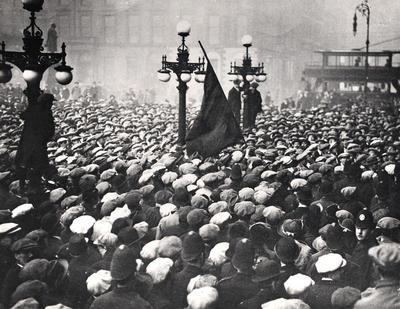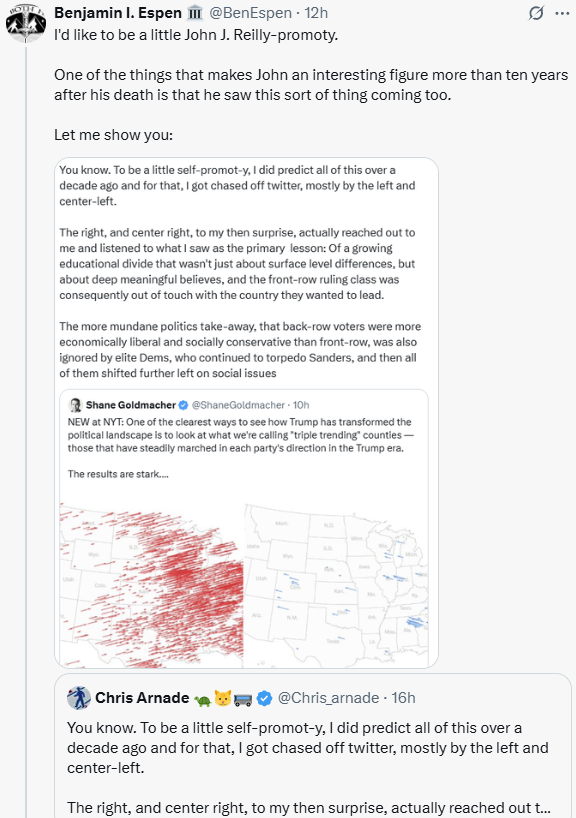The Long View 2006-05-02: General Strike; Ethanol

Sometimes bluffs are called
I don't remember it it was the same event as the one John Reilly mentions here, but there was a day without immigrants in Los Angeles where all of the illegal immigrants stayed home to show what the impact of their labor was. Mostly the Angelenos were impressed by how not busy the freeways were. That particular experiment wasn't repeated for something like ten years because of how poorly it turned out.
General Strike; Ethanol
Consider the multiple misapprehensions in this quote from a participant in a demonstration that was part of yesterday's "Day Without Immigrants":
"We are the backbone of what America is. Legal or illegal, it doesn't matter," said Melanie Lugo, who with her husband and their third-grade daughter joined an estimated 75,000 rallying in Denver. "We butter each other's bread. They need us as much as we need them."
Actually "legal or illegal" makes all the difference in the world. The US is worth coming to because the law works here. The cops won't rob you and the Postal Service will deliver the mail. That is why businesses can grow and that is why there are jobs. However, the point I want to make here is tactical: the modest impact of the demonstrations and boycott showed precisely that illegal immigrants are not the backbone of America.
The boycott was a blunder of the first magnitude.
If you are running a labor movement, you may threaten a General Strike. You may organize in the name of a prospective General Strike. The one thing no sane labor movement ever does is call a General Strike, because unless the world ends as a consequence the movement's bluff will have been called.
That was pretty much the moral of the British General Strike of 1926. That unhappy action was called in solidarity with the coal miners, who had fairly narrow demands, but their cause became mixed up with the mythology of the rising tide of socialism. Over the previous fifty years, the prospect of the inevitable victory of organized labor had become like the Second Coming. When the General Strike failed, it was as if everyone at the Final Judgment had gotten off with a warning.
* *
As for Peak Oil Doomsday, the federal government remains serene:
Energy Secretary Samuel Bodman said Sunday that the U.S. was just "three or four years" away from perfecting the process that would allow American motorists to fuel their vehicles with ethanol instead of gasoline...Bodman estimated that by 2025, ethanol production would replace about 20 percent of total U.S. gasoline consumption.
Supposedly, ethanol became commercially viable when oil broke $40 per barrel. Those processes that the Energy Secretary was talking about are connected with the processing of cellulosic ethanol; that is, ethanol made from grass, rather than corn. Ground Zero for this technology is the Canadian company, Iogen.
To put it mildly, there are arguments against putting much faith in ethanol as an alternative fuel, and Businessweek has made them at length. On the whole, though, I am surprised at how well the ethanol option stands up to examination.
The really interesting point is this: all renewable energy sources are far more intrusive than fossil fuels. Fossil fuels were attractive precisely because they are so concentrated; geology compacted millions of years of sunshine into easily portable forms. Wind, bio-fuel, and solar, in contrast, all have to collect new solar radiation, and that means taking up space.
The penny is just beginning to drop about this with regard to windpower. Wind-powered electrical generation has its virtues, but a useful infrastructure has to cover a significant fraction of the landscape with towers that look like a force of invading Martians. Ethanol farming promises to become the landscape, especially if the cellulose technology is as effective as we hope. Since 1900, much of the continental United States has become reforested as small farms were abandoned. Now it seems likely that that trend will be reversed.
* * *
None of my readers have emailed me to ask how bad is inflation in Zimbabwe:
Well, consider this: at a supermarket near the center of this tatterdemalion capital, toilet paper costs $417...No, not per roll. Four hundred seventeen Zimbabwean dollars is the value of a single two-ply sheet...By March, inflation had touched 914 percent a year, at which rate prices would rise more than tenfold in 12 months.
I mention this because over the weekend I was shown a letter from Zimbabwe. The canceled first-class stamp had cost $300,000. What shocked me, though, was that in real terms that stamp had cost about $5 in US money. Who could afford to use a system with real prices that high?
Copyright © 2006 by John J. Reilly




Comments ()